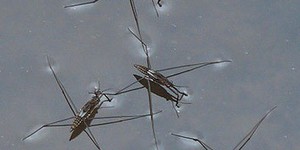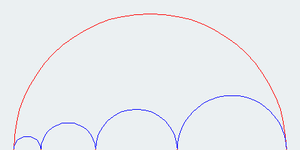Others Like “Honesty: How Prevalent Is It?” (top 20 results)
|
You are looking under your bed for that video game you want to play, when you come across a real treasure—an open bag of potato chips that you forgot about! A crispy and salty potato chip is a tasty treat. But wait! This potato chip is not crisp and does not taste as great as it should. What happened? The chips have gone rancid! In this cooking and food science fair project, you will look into what factors turned your chips rancid.
Read more
Do you like skeletons? One of the more interesting jobs at a natural history museum is the creation and care of the skeletons and bones. How do the curators clean and put together the skeletons? Many curators use the carrion beetle, Dermestes vulpinus, to quickly clean off the dead animal tissue from a corpse to reveal the skeleton. These insects do such a good job that sometimes the skeleton remains intact! Another method is to slow cook the carcass until the meat falls off. You can use…
Read more
Can an authority figure make someone question their own memory? How reliable is eyewitness information? This project looks into these questions. You'll need a poster-sized image that includes many faces, and a volunteers to act as "eyewitnesses." The volunteers are tested individually. The instructions are that they have one minute to examine the poster, and then a fixed amount of time (e.g., 5 minutes) to write down brief, accurate descriptions of all the faces they can remember. They'll…
Read more
Water striders (also called water bugs, pond skippers, etc.) are insects that can hop around on the surface of water (Figure 1). Unlike boats or other floating objects that are partially submerged and held up by the resulting buoyant force, water striders are held up by surface tension.
Figure 1. Water striders (image credit Isaka Yoji).
You can build your own water striders using thin wire (Figure 2 and following video). Do some background…
Read more
This a straightforward, but interesting, project in geometry. It is a good first proof to try on your own. You should be able to figure it out by yourself, and you'll gain insight into a basic property of circles.
Figure 1 below shows a semicircle (AE, in red) with a series of smaller semicircles (AB, BC, CD, DE, in blue) constructed inside it. As you can see, the sum of the diameters of the four smaller semicircles is equal to the diameter of the large semicircle. The area of the larger…
Read more
Want to send coded messages to your friends? Can you write a simple letter-substitution encryption program in JavaScript? How easy is it to break the simple code? Can you write a second program that "cracks" the letter-substitution code? Investigate other encryption schemes. What types of encryption are least vulnerable to attack?
Read more
How high can you throw different types of balls, like a golf ball, a basketball, and a football? Would one of them go higher than the others? Do factors like mass, shape, and volume influence the final height? You can measure the approximate maximum height a thrown ball reaches by measuring the time it spends in the air.
To do this project, you'll need at least one ball and a helper with a stopwatch. Your helper should start timing just as you release the ball, and stop right when the ball…
Read more
Take shots at a set distance from the basket, but systematically vary the angle to the backboard. For a basic project: How do you think your success rate will vary with angle? Draw a conclusion from your experimental results. A bar graph showing success rate at different angles can help to illustrate your conclusion. For a more advanced project: Use your knowledge of geometry and basketball to come up with a mathematical expression to predict your success rate as a function of angle…
Read more
Block off one-third of a soccer net with a cone, 5-gallon bucket or some other suitable object. Shoot into the smaller side from a set distance, but systematically varying the angle to the goal line. Take enough shots at each angle to get a reliable sample. How does success vary with angle? For a basic project: How do you think your success rate will vary with angle? Draw a conclusion from your experimental results. A bar graph showing success rate at different angles can help to…
Read more
Music has many mathematical elements in it: rhythm, pitch, scale, frequency, interval, and ratio. There are many ways to turn these elements into a science fair project. You can investigate how the scale is based upon a special type of number sequence called a Harmonic Series. Another scale used by Bach, called the "Well-Tempered-Scale" or the "Equal-Tempered-Scale", is based upon a series. How are these mathematical series and ratios related to notes, chords, intervals, and octaves? You can…
Read more
|
Explore Our Science Videos
Follow the Flow: 2017 Engineering Challenge
Bending Plant Roots with Gravity Lesson Plan Introduction
DIY Toy Sailboat







